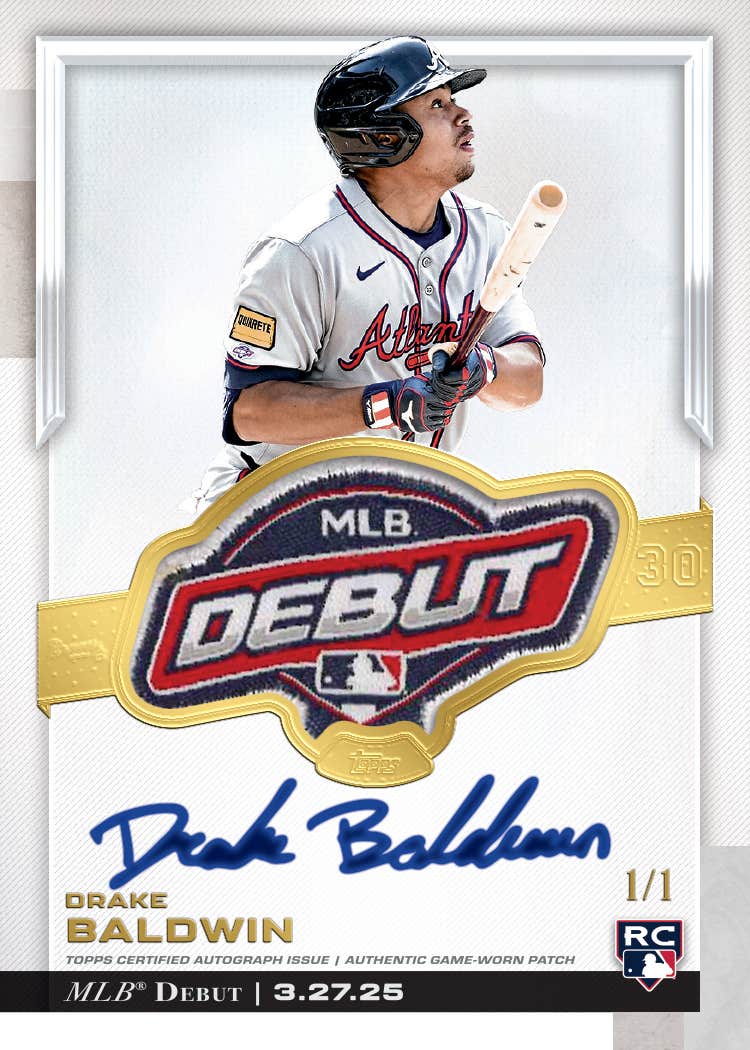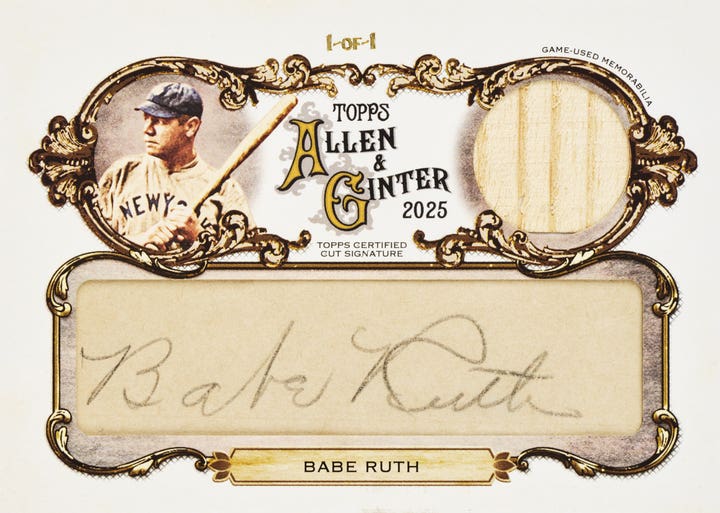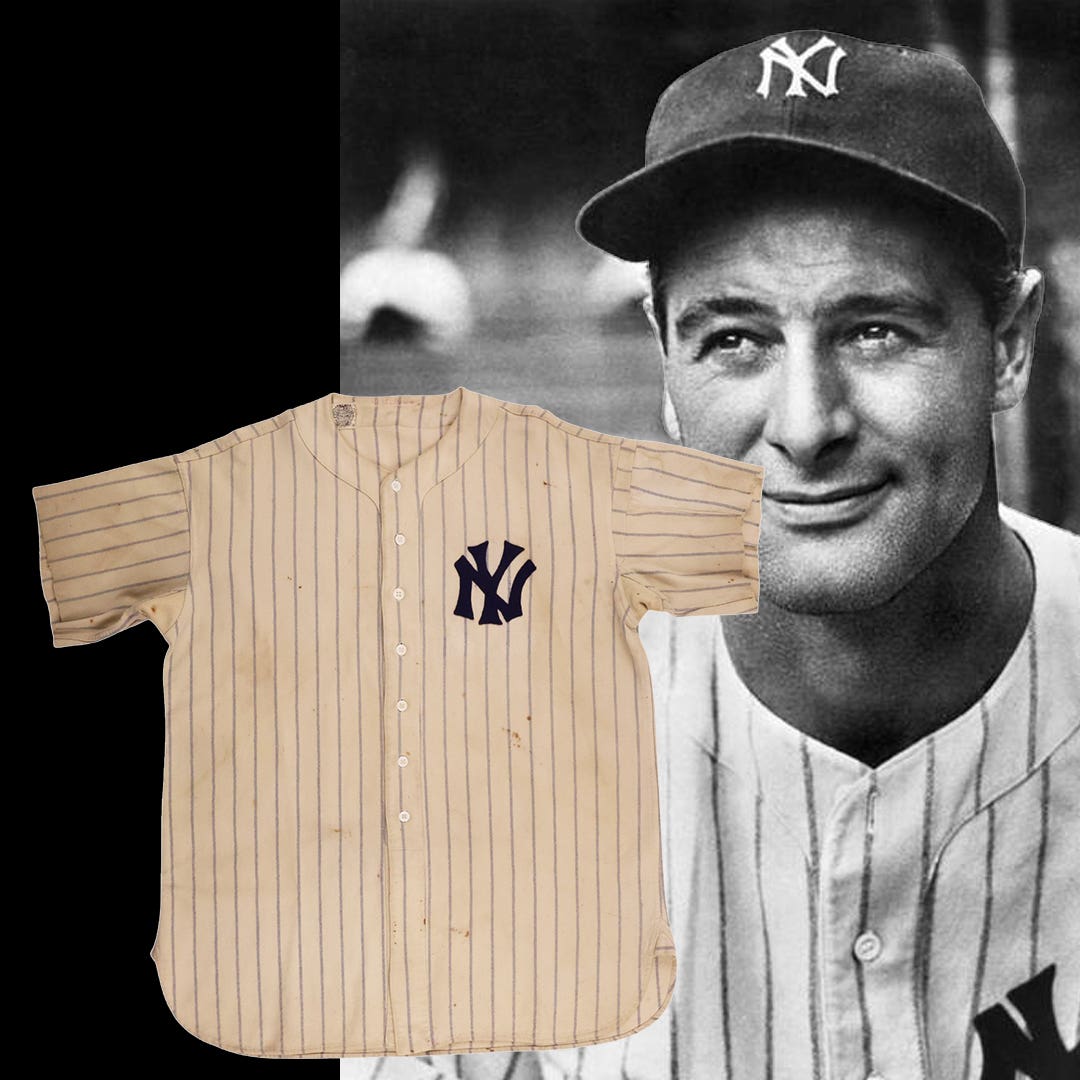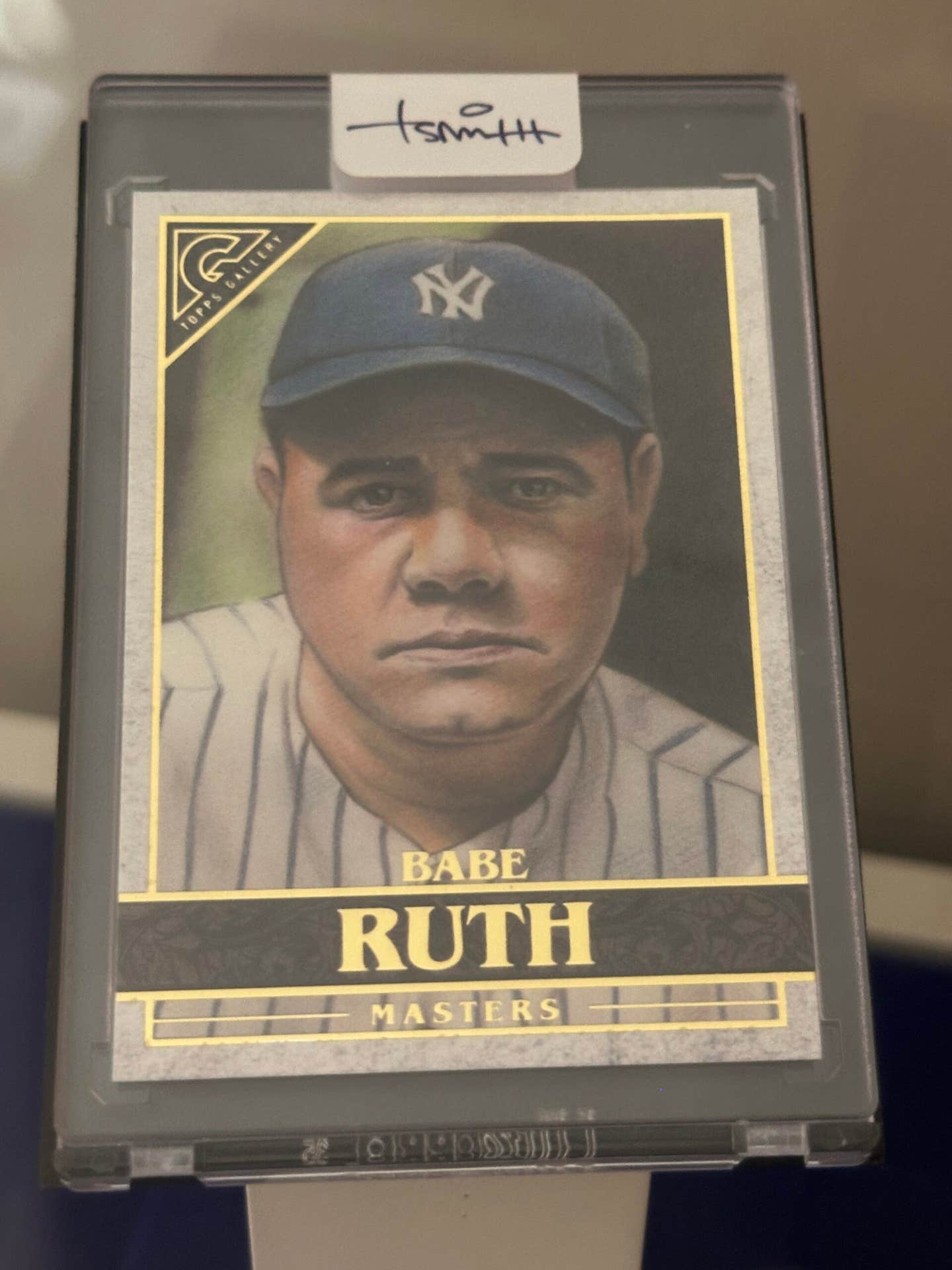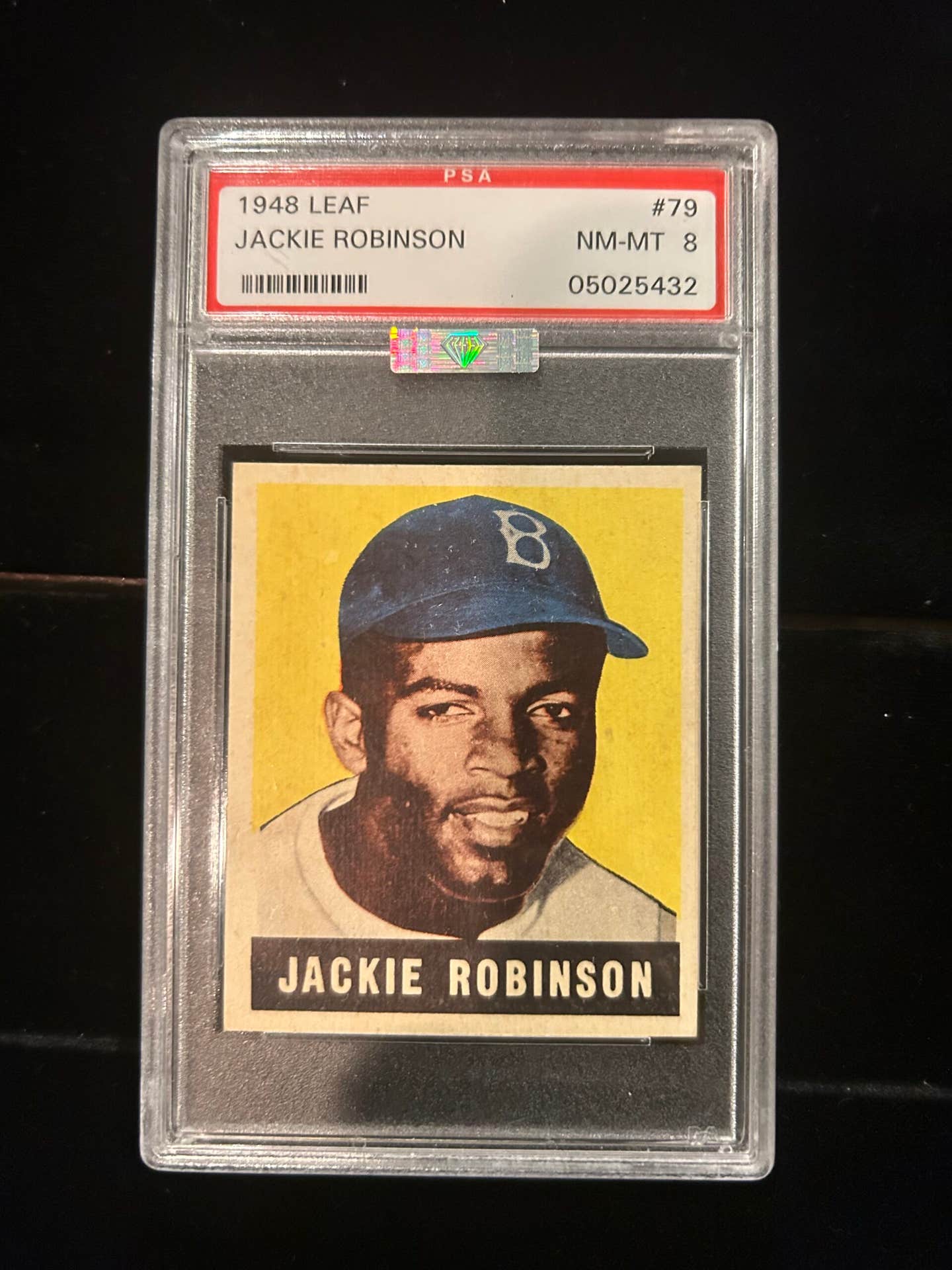Artwork
Artist George Sosnak Brought Baseballs to Life
Great artists have something in common – they start with a blank slate and then create. They are subject to the same environmental influences as many of us are, but great artists interpret these issues internally in a unique fashion and spit them back out to the world. Oftentimes, the final product is something unique that has never been seen before.
Such is the artwork of George Sosnak.
Sosnak was born in 1922 and hailed from Pittsburgh. He passed away in 1992. He was a soldier, construction crewman, donut maker and recreation park supervisor. He even had a cartoon hour for children on television but was forced to give it up as his painting began to take up more of his time.
He had a passion for the game of baseball but did not have the athletic skill to be a player, so he did the next best thing to be involved in the game – he became an umpire. He started to do some umpiring in the military in Germany after World War II. Sosnak ended up rising up through the ranks before finally settling in as an umpire in the Pioneer League, where he was for the 1956-58 seasons. He later went on to umpire in the Three-I League and Southern Association, however, both leagues folded. His dreams of becoming a Major League umpire were never fulfilled.
Somewhat frustrated as an umpire, he became an accidental artist. He was a self-taught artist, with work that is fervently inspired and he was not driven by profit potential.
The artist emerges
Sosnak had always enjoyed painting, but he had an odd request while he was umpiring a game in Idaho in 1956. A female fan asked if he could paint a baseball featuring her favorite ball player. Sosnak obliged; he always obliged.
The painting of baseballs began from that simple request and then became a viable outlet for Sosnak to share his passion for the game of baseball. Sosnak’s work slowly grew to cult-like popularity, and demand soon followed for his work. The demand came from all directions – politicians, baseball players, batboys, fans, presidents, baseball owners, hospitals, foreign dignitaries, charity groups, churches, sportswriters, managers and anyone who would simply ask. Sosnak was not one to turn anyone down. Oftentimes, players sought out his services at spring training games in Florida when he was umpiring. He was sometimes paid for the work. However, he would often finish a baseball and simply present it to the player, person or organization as a gift.
If he had a favorite team, it was the Detroit Tigers. There is an unusually large array of Tigers-related work among his finished work. Sosnak was an umpire for several years at the Tigers spring training site, and he ultimately settled in Lakeland, Fla. He would also attend the Annual Florida Governors dinner, and there are many works featuring players and politicians that he met through this venue. In typical fashion, he would get an item signed at the dinner and then start his research to lay the foundation for his next creation.
Sosnak usually did his work in India Ink that was meticulously applied to baseballs. In a distinctive folk style, he had a somewhat crude depiction of a player or an event that was then elaborately surrounded with microscopic text and colorful backdrops. Many times, Sosnak would include logos from a certain team with historical text that he researched. His descriptions were anything but canned text. He enjoyed going away from the mainstream and detailing events with various nuances of the occasion. A magnifying glass sometimes is required to read the text.
Turning baseballs into murals
Sosnak would send a ball to player or get it signed in person and then start to decorate the rest of the baseball. Once a ball was signed, he would even occasionally trace over the player’s signature in India ink. In certain instances, Sosnak would wait to get the ball signed until after he finished painting it. These baseballs were sometimes sent through the mail to the player for a signature, but they sometimes didn’t come back, as the person kept the ball. Many of the balls had a thin coating of shellac applied as the final step in the process.
Sosnak painted baseballs featuring baseball immortals such as George Sisler, Charlie Gehringer, Lefty Gomez, Eddie Stanky, Mickey Cochrane, Al Lopez, Casey Stengel, Ted Williams, Roger Maris and Bob Feller, among others.
He even stepped outside of baseball to do baseballs at the request of hockey Hall of Famer Gordie Howe and former Detroit Lions and Pittsburgh Steelers quarterback Bobby Layne.
He painted balls for milestone moments, such as Harvey Kuenn’s and Luis Aparicio’s 1,000th base hit.
Then there was the ball about Johnny Mostic, a center fielder who had the odd distinction of catching a foul ball for an out. He also painted a baseball for 12-year-old Everett Knowles, who still had dreams of playing baseball after the youngster lost an arm when a train ran over it. The arm was surgically reattached, and the ball detailed the boy’s dream. Sosnak also did a ball noting the oddity of one player traded to another team for a candy bar.
Values increase with time
What was the scope of his work?
This is unknown. There is not a vast array of written documentation regarding this issue. The baseballs are scattered throughout the world. The estimates of painted orbs in existence range from 800-3,000. For some reason, most auction houses today cite the 800 number as the accepted estimate of painted baseballs. It would not surprise me that the total number of baseballs is more toward the 3,000 range – most of his work is still out there waiting to be rediscovered.
The difficulty lies in that many of the baseballs were tucked away by the individual portrayed and have never even been seen in the mainstream hobby or collecting world. Collectors who have stumbled upon a Sosnak work usually keep them under lock and key or proudly display them in their own homes. They are not the type of items that are bought and flipped on the secondary market. Each piece of work is one of a kind.
During the 1980s and early 1990s, I occasionally saw isolated Sosnak painted baseballs pop up at sports cards shows, and they were usually priced under $100 per ball, sometimes higher if the subject was a Hall of Famer, it was signed by a superstar or if it was a multi-signed ball.
After Sosnak’s death in 1992, prices started to creep up as more people realized the significance and individuality of his work. The market today ranges from $500 to several thousand dollars for a painted baseball. In May 2006, Hunt Auctions sold a Sosnak painted ball of Joe DiMaggio as part of many items from the DiMaggio estate. The ball had an estimate of $2,000-$3,000, and hammered down at $5,000. There is competition for his artwork from baseball fans, folk artist collectors and museums.
Works in progress
When Sosnak died, there was a mini hoard of painted baseballs secured by an auction house from his widow, and the hobby has been quickly been absorbing these over the last decade.
Not all of this artwork was complete. Sosnak was painting right up until his death, so some of the baseballs from this hoard were projects – they had one panel painted but were far from finished. I had the opportunity to buy a box of some of Sosnak’s personal effects and a few of his original works. There was some research material, articles, photos and a business card. It was a modest array of material but a very interesting partial glimpse of the man. There were some newspaper articles that featured him pictured as an umpire and an article where former player and 23-year veteran National League umpire Lee Ballafant stated that Sosnak should be promoted from the Pioneer League and umpiring in a better league.
There was also a black-and-white 8-by-10 of Hall of Famer Ford Frick. Sosnak wrote on the back, “The man who said I should be in the Hall of Fame.” The photo was subsequently signed by Frick. The Hall of Fame in Cooperstown, N.Y., indeed has Sosnak work as part of its massive collection.
His work can be found at many museums, such as the American Folk Art Museum in New York City. You can also see one of Sosnak’s works (detailing JFK’s Opening Day pitch at a 1962 Senators game) in the John F. Kennedy Presidential Library.
Not just painted baseballs
The majority of Sosnak’s work did come in the form of a painted baseball. However, he did venture into other styles of presentation. For some time, he did isolated works on large, flat items. I have seen items that are 16-by-20 in size and much larger. Many of these were unfinished.
I bought a 8-by-13 painting of the Brooklyn Bum Emmett Kelly that was done in 1976. It had been originally signed by Kelly, and Sosnak traced over his signature.
Sosnak occasionally did some painting based on the NFL. The one example I have pictured is in the form of a pennant and was done for his hometown Steelers celebrating their victory in Super Bowl X. This pieced has tack holes in it, signs that he had it hung up on the wall.
Sosnak also hand-painted envelopes. He would usually make a print of the original work on the envelope and then send the player a permission letter to sign a baseball. He usually left a place on the envelope for the stamp and the player’s address. It was a very unique calling card.
When sports or non-sports fans walk through my game room, it is almost always without fail the Sosnak work is what people are drawn to. It brings an instant diversity to a collection that is hard to duplicate. The presentation of his work is simple, but very strong. People often want to buy the Sosnak items, but like many other collectors, my Sosnak originals fall sharply in the “not for sale” category.
His work is as unique as the man himself, and much of his work is still out there waiting to be discovered.
Dave Bailey is a free lance contributor to SCD . For auction prices realized of George Sosnak's work, please visitwww.scdauctions.com.




